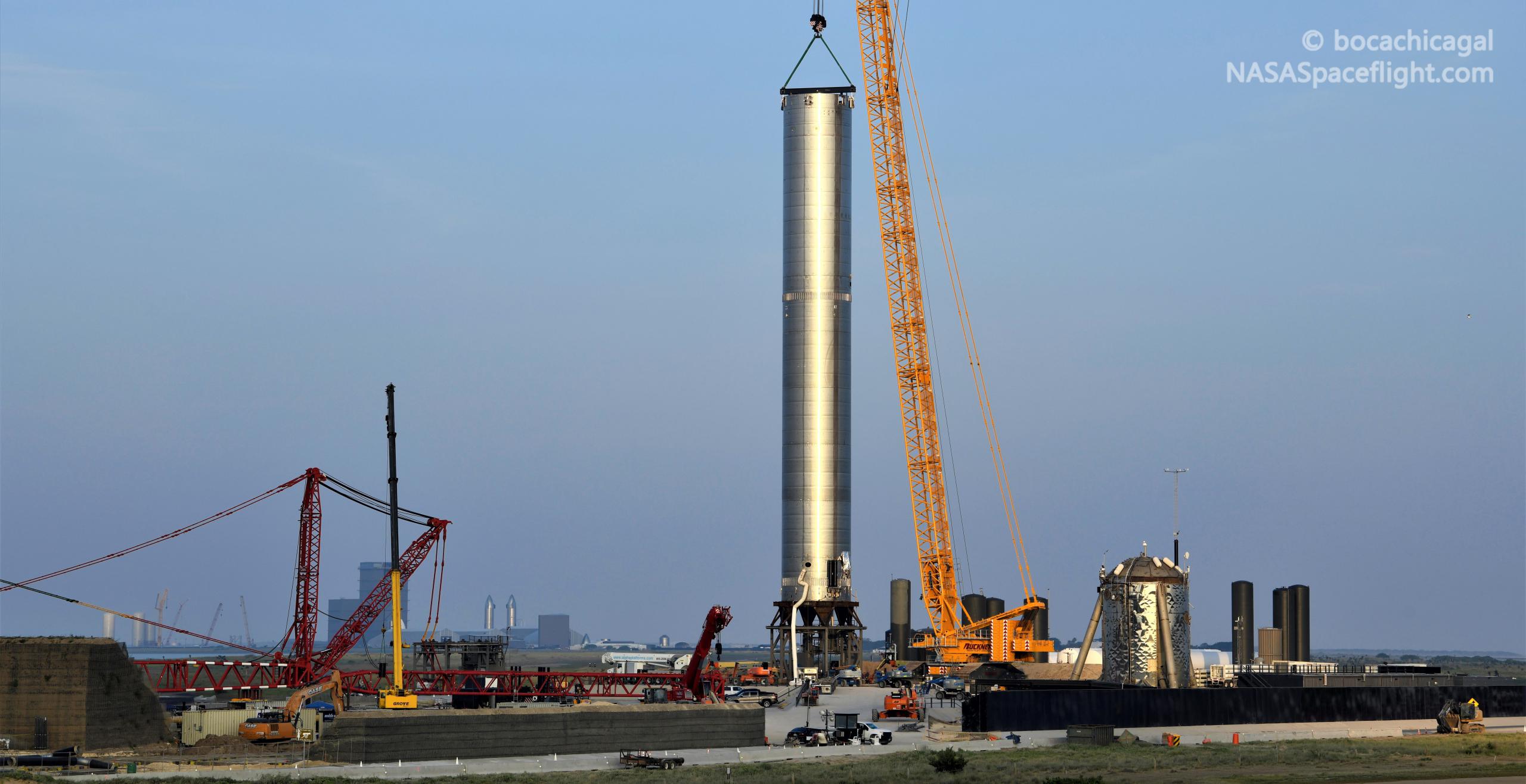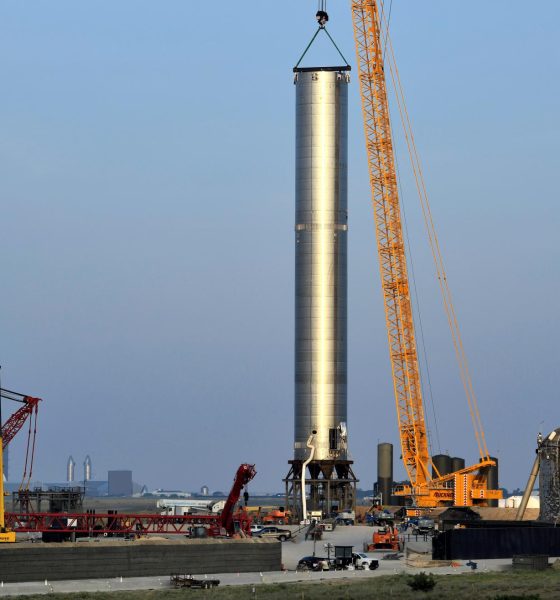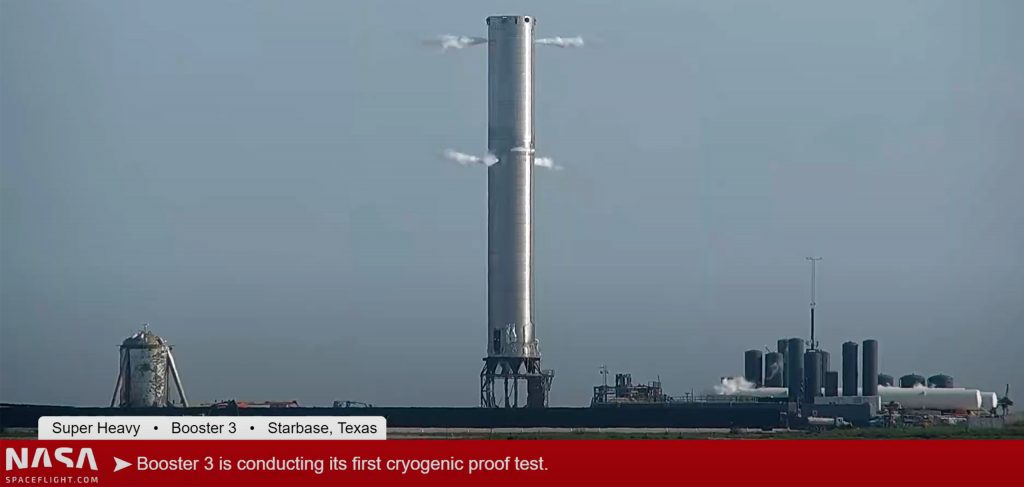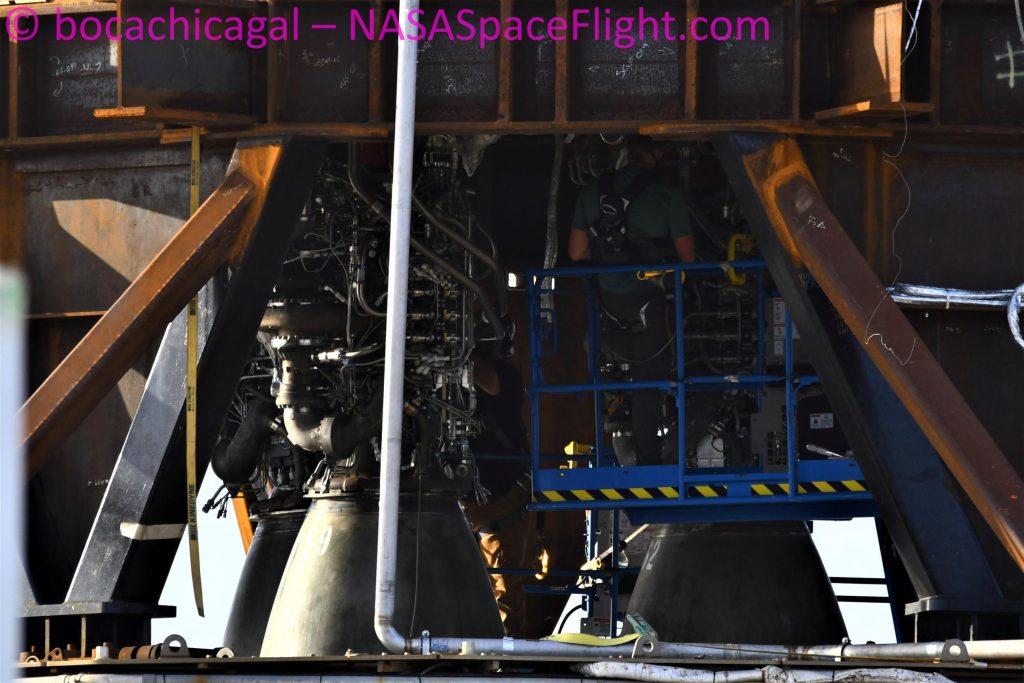

News
SpaceX’s first Super Heavy booster static fire slips to next week
Update: SpaceX has cancelled Thursday’s road closure, likely pushing Super Heavy’s first attempt at a static fire test into next week.
After an apparent false start on Wednesday morning, SpaceX has distributed a second safety alert among Boca Chica residents in anticipation of the first static fire of a Super Heavy booster as early as July 15th.
Delineated by highway and beach closures filed in advance with Cameron County, Thursday’s window stretches from 12pm to 8pm or 10pm CDT (UTC-5), giving SpaceX 8-10 hours to put the first functional Super Heavy booster prototype through its most challenging tests yet.
Known as a static fire, what is a mostly routine test for operational rockets is a bit more of a challenge for a first-of-its-kind prototype. Notably, on July 12th, Super Heavy Booster 3 survived its first ‘cryogenic proof’ pressure test, withstanding the thermal and mechanical stresses created when the rocket was filled with a few hundreds tons of liquid nitrogen and the expanding gases created as that cryogenic fluid then warmed and boiled. However, Booster 3 has yet to perform any kind of test involving the combustible, explosive liquid oxygen and methane propellant needed to fuel Raptor engines.
By all appearances, SpaceX aims to roll Super Heavy’s first wet dress rehearsal (WDR; like a ‘cryo proof’ with real propellant) and static fire into one busy day of testing. That combined WDR and static fire will likely be the first time ever that a launch vehicle as large as Super Heavy has attempted to pressurize its tanks autogenously, referring to the process of using a rocket’s own fuel and oxidizer to generate ullage gas. Starship prototypes notoriously struggled with their smaller autogenous pressurization systems – and jerry-rigged alternatives – on several occasions.


In other words, even an ignition-free wet dress rehearsal test completed with autogenous pressurization would be a major success and hurdle surmounted for Super Heavy. If SpaceX manages to perform the first booster WDR and static fire on the same day, it would indicate that the company has extreme confidence in Super Heavy.
Despite an aborted attempt on July 11th, SpaceX outfitted the rocket with one Raptor on Saturday, July 10th and installed another two engines in quick succession on Tuesday, July 13th – likely in an odd triangular configuration on the booster’s central nine-engine ‘thrust puck.’ Why that particular configuration was chosen instead of something more symmetric is unclear but it does decrease the odds of a multi-engine test on Super Heavy’s first static fire without a clear reason to assume that testing such an odd engine placement would provide some valuable insight.
In comparison, two engines on opposite sides of Super Heavy’s inner ‘ring’ or three engines forming a line across that ring are two configurations that boosters are very likely to use during landing burns. Regardless, according to Next Spaceflight’s Michael Baylor, SpaceX may start Super Heavy B3’s static fire test campaign with just one engine, so it’s not impossible that the current configuration is just a part of the incomplete process of installing five or more engines.
As with all Starship development, it’s equally likely that Super Heavy’s first wet dress rehearsal and static fire test attempts will slip late into the window, to Friday, or even to the week of July 19th. Stay tuned for updates!

News
Tesla FSD fleet is nearing 7 billion total miles, including 2.5 billion city miles
As can be seen on Tesla’s official FSD webpage, vehicles equipped with the system have now navigated over 6.99 billion miles.

Tesla’s Full Self-Driving (Supervised) fleet is closing in on almost 7 billion total miles driven, as per data posted by the company on its official FSD webpage.
These figures hint at the massive scale of data fueling Tesla’s rapid FSD improvements, which have been quite notable as of late.
FSD mileage milestones
As can be seen on Tesla’s official FSD webpage, vehicles equipped with the system have now navigated over 6.99 billion miles. Tesla owner and avid FSD tester Whole Mars Catalog also shared a screenshot indicating that from the nearly 7 billion miles traveled by the FSD fleet, more than 2.5 billion miles were driven inside cities.
City miles are particularly valuable for complex urban scenarios like unprotected turns, pedestrian interactions, and traffic lights. This is also the difference-maker for FSD, as only complex solutions, such as Waymo’s self-driving taxis, operate similarly on inner-city streets. And even then, incidents such as the San Francisco blackouts have proven challenging for sensor-rich vehicles like Waymos.
Tesla’s data edge
Tesla has a number of advantages in the autonomous vehicle sector, one of which is the size of its fleet and the number of vehicles training FSD on real-world roads. Tesla’s nearly 7 billion FSD miles then allow the company to roll out updates that make its vehicles behave like they are being driven by experienced drivers, even if they are operating on their own.
So notable are Tesla’s improvements to FSD that NVIDIA Director of Robotics Jim Fan, after experiencing FSD v14, noted that the system is the first AI that passes what he described as a “Physical Turing Test.”
“Despite knowing exactly how robot learning works, I still find it magical watching the steering wheel turn by itself. First it feels surreal, next it becomes routine. Then, like the smartphone, taking it away actively hurts. This is how humanity gets rewired and glued to god-like technologies,” Fan wrote in a post on X.
News
Tesla starts showing how FSD will change lives in Europe
Local officials tested the system on narrow country roads and were impressed by FSD’s smooth, human-like driving, with some calling the service a game-changer for everyday life in areas that are far from urban centers.

Tesla has launched Europe’s first public shuttle service using Full Self-Driving (Supervised) in the rural Eifelkreis Bitburg-Prüm region of Germany, demonstrating how the technology can restore independence and mobility for people who struggle with limited transport options.
Local officials tested the system on narrow country roads and were impressed by FSD’s smooth, human-like driving, with some calling the service a game-changer for everyday life in areas that are far from urban centers.
Officials see real impact on rural residents
Arzfeld Mayor Johannes Kuhl and District Administrator Andreas Kruppert personally tested the Tesla shuttle service. This allowed them to see just how well FSD navigated winding lanes and rural roads confidently. Kruppert said, “Autonomous driving sounds like science fiction to many, but we simply see here that it works totally well in rural regions too.” Kuhl, for his part, also noted that FSD “feels like a very experienced driver.”
The pilot complements the area’s “Citizen Bus” program, which provides on-demand rides for elderly residents who can no longer drive themselves. Tesla Europe shared a video of a demonstration of the service, highlighting how FSD gives people their freedom back, even in places where public transport is not as prevalent.
What the Ministry for Economic Affairs and Transport says
Rhineland-Palatinate’s Minister Daniela Schmitt supported the project, praising the collaboration that made this “first of its kind in Europe” possible. As per the ministry, the rural rollout for the service shows FSD’s potential beyond major cities, and it delivers tangible benefits like grocery runs, doctor visits, and social connections for isolated residents.
“Reliable and flexible mobility is especially vital in rural areas. With the launch of a shuttle service using self-driving vehicles (FSD supervised) by Tesla in the Eifelkreis Bitburg-Prüm, an innovative pilot project is now getting underway that complements local community bus services. It is the first project of its kind in Europe.
“The result is a real gain for rural mobility: greater accessibility, more flexibility and tangible benefits for everyday life. A strong signal for innovation, cooperation and future-oriented mobility beyond urban centers,” the ministry wrote in a LinkedIn post.
News
Tesla China quietly posts Robotaxi-related job listing
Tesla China is currently seeking a Low Voltage Electrical Engineer to work on circuit board design for the company’s autonomous vehicles.

Tesla has posted a new job listing in Shanghai explicitly tied to its Robotaxi program, fueling speculation that the company is preparing to launch its dedicated autonomous ride-hailing service in China.
As noted in the listing, Tesla China is currently seeking a Low Voltage Electrical Engineer to work on circuit board design for the company’s autonomous vehicles.
Robotaxi-specific role
The listing, which was shared on social media platform X by industry watcher @tslaming, suggested that Tesla China is looking to fill the role urgently. The job listing itself specifically mentions that the person hired for the role will be working on the Low Voltage Hardware team, which would design the circuit boards that would serve as the nervous system of the Robotaxi.
Key tasks for the role, as indicated in the job listing, include collaboration with PCB layout, firmware, mechanical, program management, and validation teams, among other responsibilities. The role is based in Shanghai.
China Robotaxi launch
China represents a massive potential market for robotaxis, with its dense urban centers and supportive policies in select cities. Tesla has limited permission to roll out FSD in the country, though despite this, its vehicles have been hailed as among the best in the market when it comes to autonomous features. So far, at least, it appears that China supports Tesla’s FSD and Robotaxi rollout.
This was hinted at in November, when Tesla brought the Cybercab to the 8th China International Import Expo (CIIE) in Shanghai, marking the first time that the autonomous two-seater was brought to the Asia-Pacific region. The vehicle, despite not having a release date in China, received a significant amount of interest among the event’s attendees.








